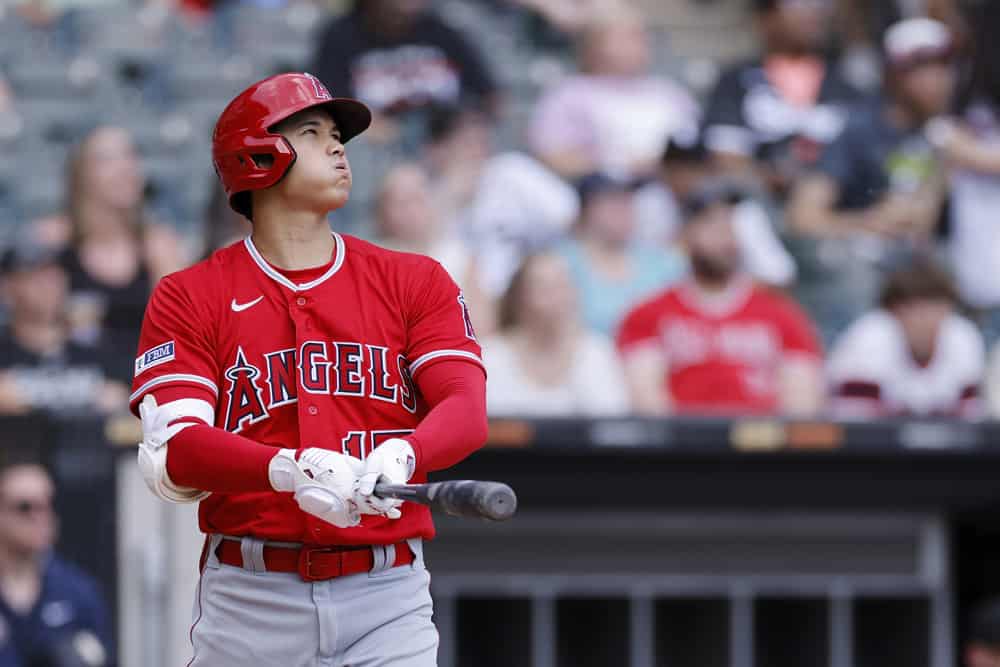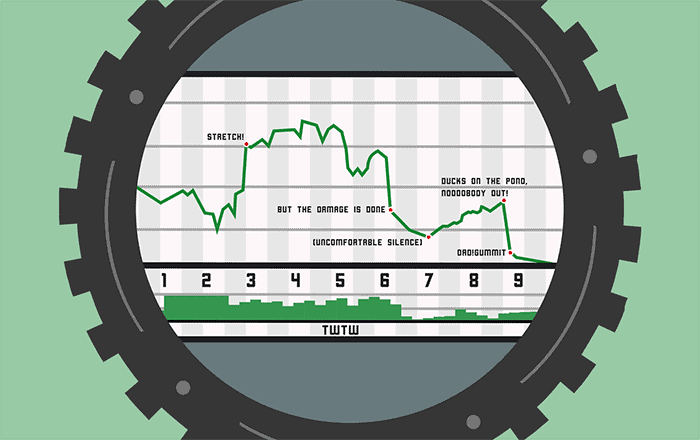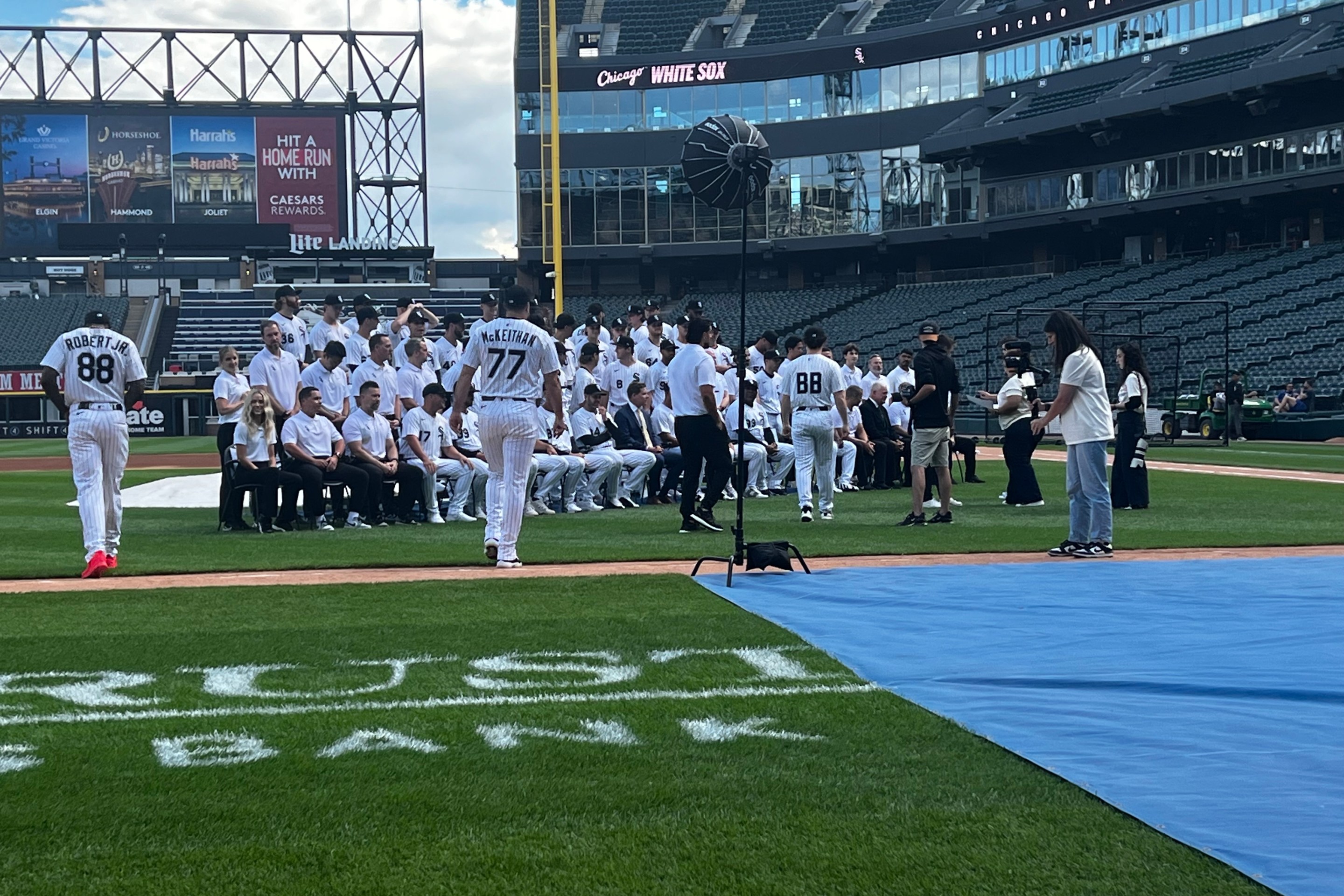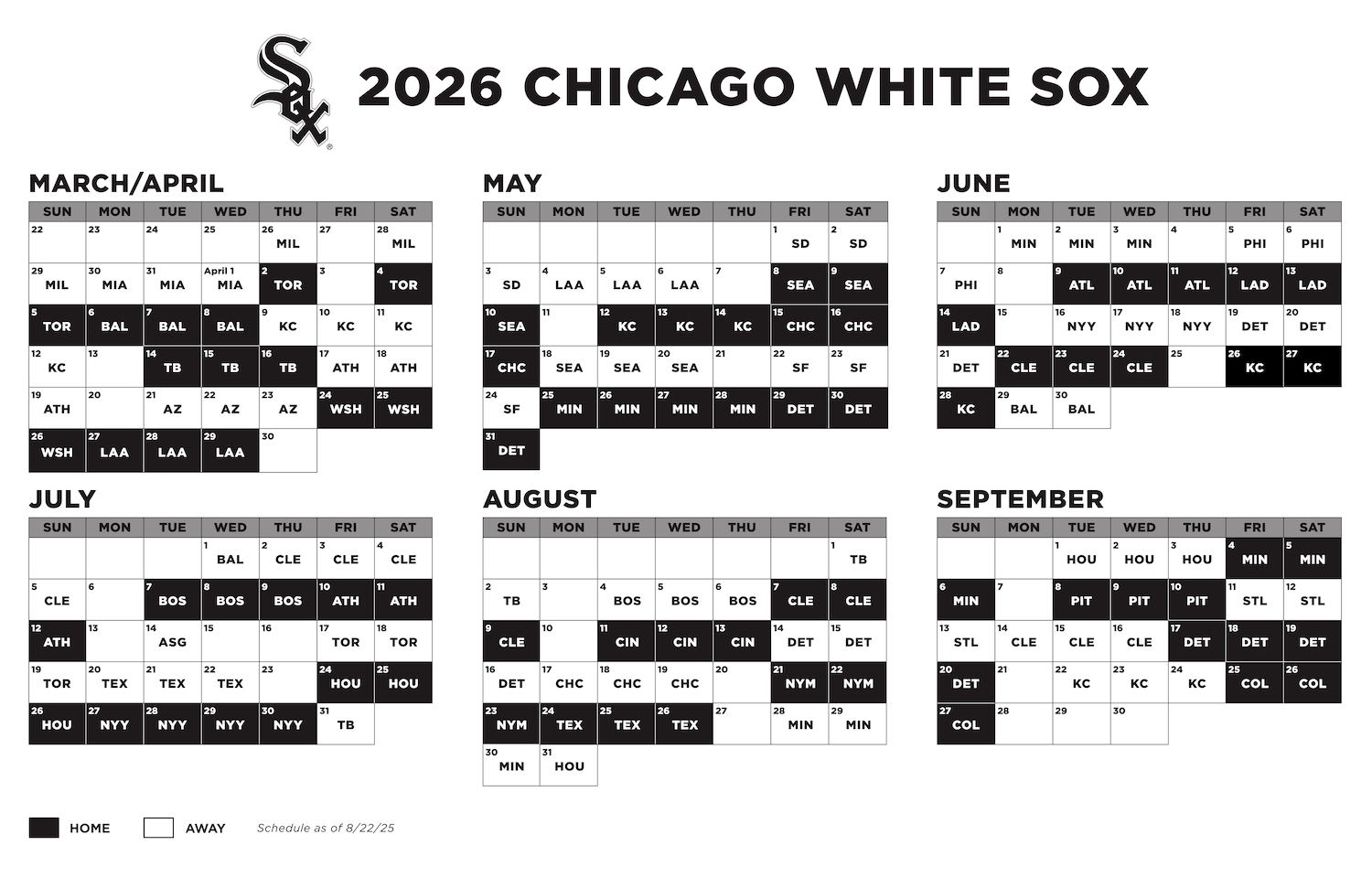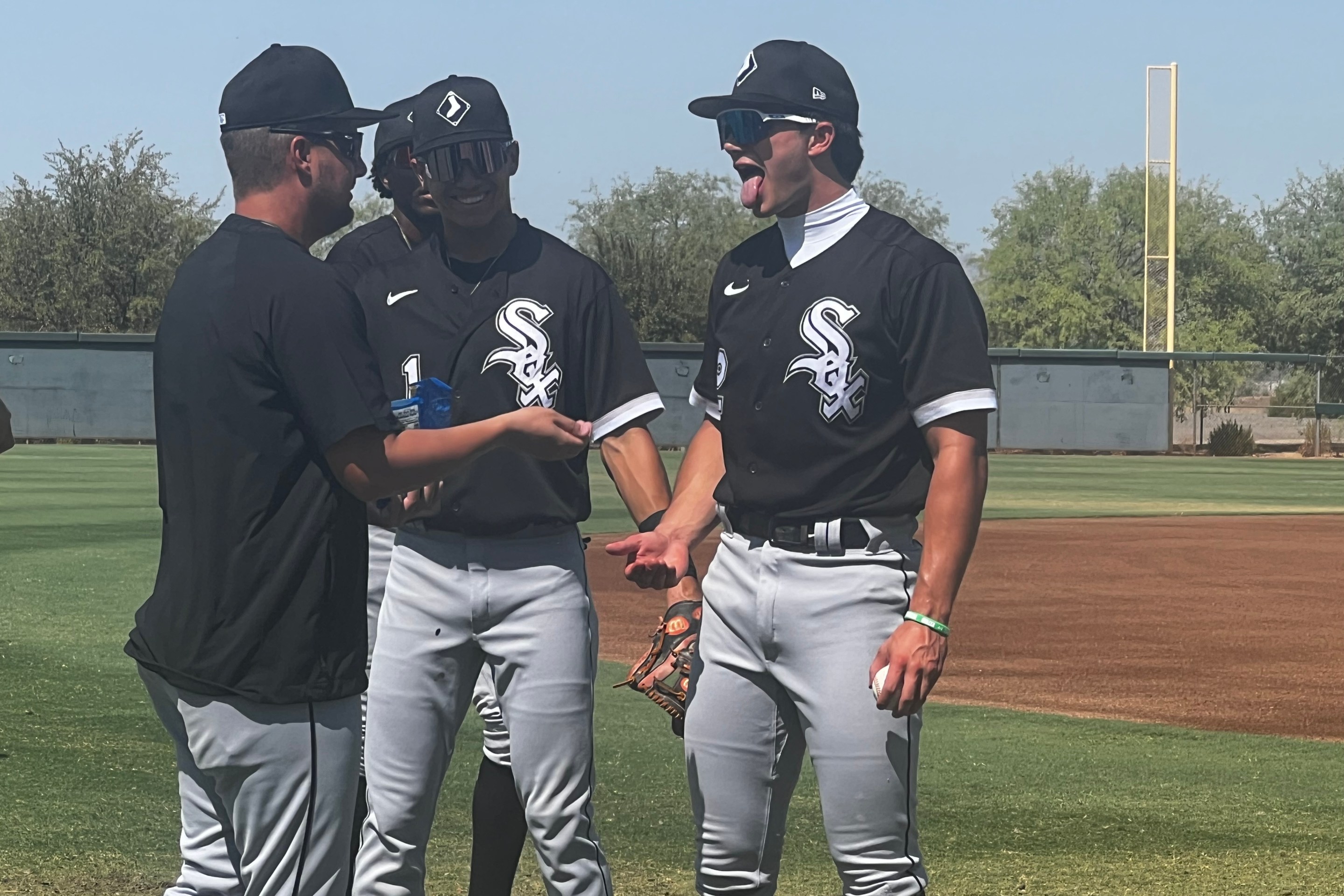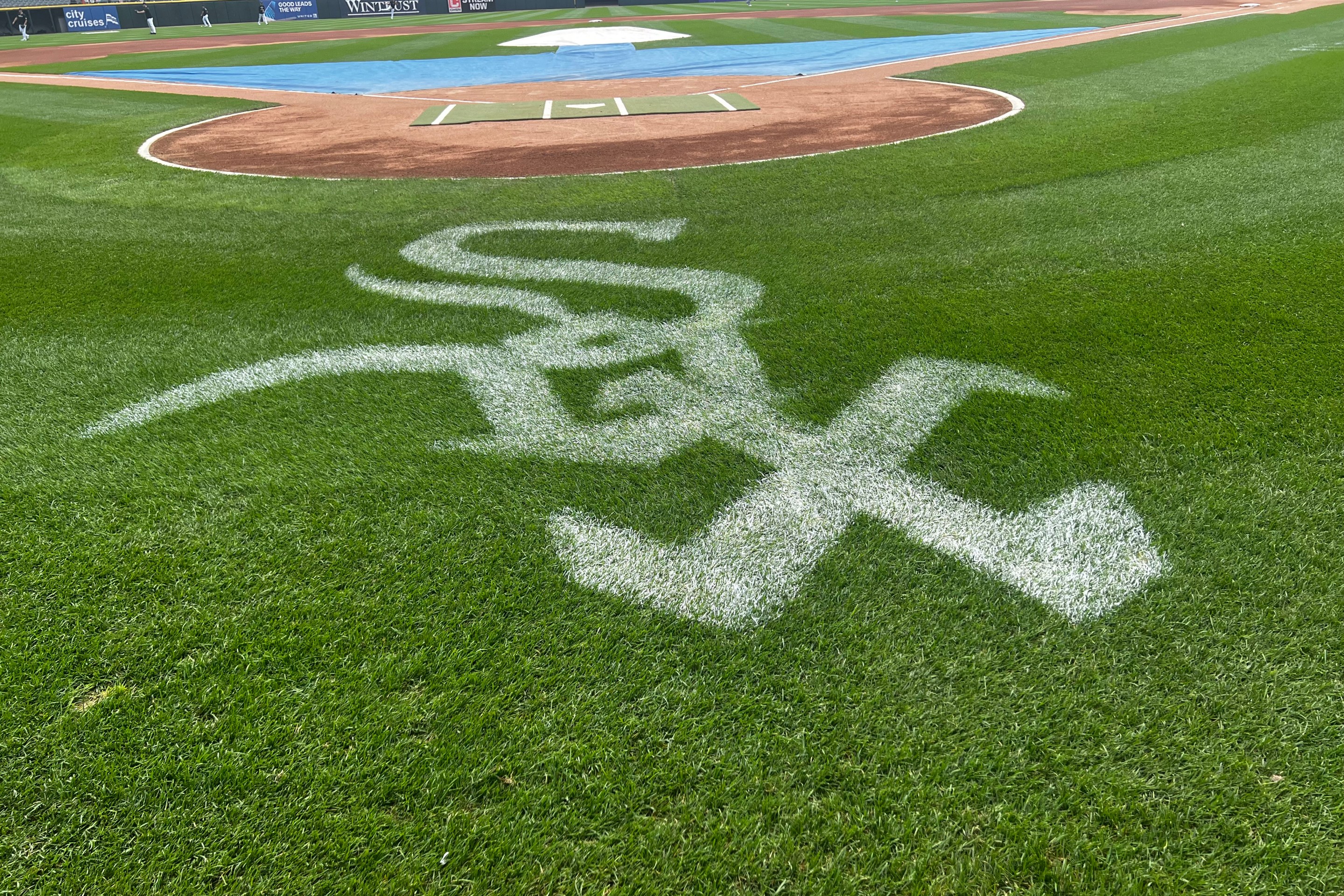Over the years, Twitter has been a useful place for posting stray observations with discrete URLs that made it easy to summon if one of them turned out to have some staying power.
This season, it's been harder to remain engaged on that particular platform. Mini Margalus will want to grab phones or laptops if I have them out in his presence, and his bedtime means I have to pause the game and catch up, or listen to innings on the radio.
But even if I were able to hang real-time, the instability of/surrounding Twitter doesn't exactly inspire me to sink time and text into it. The established communities, the ease of deploying graphics and the potential reach to non-regulars makes it hard to jump ship to competitors, but I also don't really feel like half-assing it there if I can do something more productive over here.
That said, I had the chance to watch nearly two solid hours of the White Sox's 12-5 loss to the Los Angeles on Wednesday ... in one place ... as the game actually unfolded. Instead of tweeting, I wrote down things that caught my attention, and then I returned to it later. The observations that lost their urgency I deleted, and then I fleshed out the ones that seemed useful.
Is this a worthwhile exercise? You tell me.
First inning
Years ago -- almost 10 years ago, cripes -- Grant Brisbee wrote a post saying that Guaranteed Rate Field is the park where home runs look the worst, and ever since, I've felt pangs of regret for the home runs that soared and soared, only to find a seat on the lower level.
It sucks that a 476-foot homer fails to look impressive at Guaranteed Rate Field.
Like, if a White Sox pitcher is going to give up one of the longer homers in Guaranteed Rate Field history, I at least want it to reach a section or feature that seems pretty much impossible. Jim Thome's homer in Game 163 is as good as it got in that regard, except you couldn't actually see it land. Still, that's the one area where a ball can clear something. Once the Sox removed the Goose, everything to left and right field is a waste.
Jaime Barria is one of those names that I always sing to Steely Dan's "My Old School."
Oh no, Jaime Barria won't do.
I also did this for Melky Cabrera, and I don't even like Steely Dan.
Second inning
There's probably no White Sox hitter I trust more Gavin Sheets with the bases loaded, especially with fewer than two outs. It's not because he's great -- he might or might not be, I wrote that sentence without looking at the numbers -- but because he provides the best combination of swing decisions and fly balls.
Now I'm going to look at the numbers, and fortunately, I don't look like an idiot. He's .286/.333/.429 over 24 such situations, with five strikeouts and no double plays. He came through with a sac fly here. Again, nothing spectacular, but his at-bats seem to work.
Romy González got to a slider count and was wiped out. It sure seems like the Angels are taking him more seriously, so now it's on him to adapt:
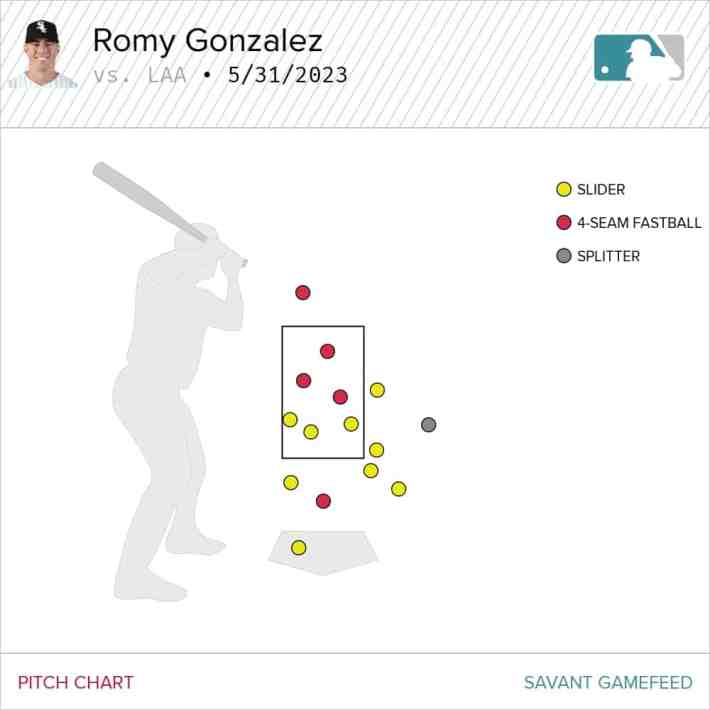
Third inning
Last week, James Fox mentioned that the White Sox's love of first-rounders has led to them having eight of the top-100 prospects from the 2017 list on their roster, and Matt Spiegel itemized the list.
Mickey Moniak was No. 17 on that list, but he slipped the Angels in the Noah Syndergaard trade, so the White Sox will continue to bide their time.
Marcus Freeman threw out the first pitch and spent the long four-run fourth with Jason Benetti and Steve Stone. I dunno, it feels unfair to interview Notre Dame's head football coach without Ed Farmer around. It's the broadcasting equivalent of wearing an unretired number that's associated with only one player.
A paradox: You can't let Mike Trout and Shohei Ohtani beat you, but if the Angels are going to beat you, you should want to see Trout and Ohtani doing it. Giving up homers to the good hitters is baseball fan service. If I'm going to a baseball game, I want the White Sox to win. Failing that, I want to see some cool stuff. Take it from me, the guy who saw Trout hit that game-tying grand slam off Chris Sale in person.
The risk in starting a runner on a 3-2 count with fewer than two outs is an inning-altering or inning-ending double. One of the benefits? The catcher can't devote his attention to framing a borderline pitch. The runners in motion might've cost Lance Lynn a strikeout, although it truly was a toss-up.
It seems like Tim Anderson's BABIP is a lot lower than .325 -- it feels like something closer to .280 -- but that's 25 points lower than his career average, so it holds up on a relative basis. Also, his lack of homers means he's not benefiting from hits that don't contribute to BABIP one way or another.
Fourth inning
As Gavin Sheets diving attempts go, this one was smoother than most. The problem remains that he has the closing speed of a Roomba.
Trout's homer was revised to 461 feet, and Ohtani's second homer of the game traveled 459. They looked equally impressive, or unimpressive as it were.
Seventh inning
Sometimes I think the Andrew Vaughn short jokes are overdone, but then you see him next to Ohtani and it's the only thing I can look at. It's like Vaughn was resized to preserve resources, but they forgot to scale down Ohtani before exporting the product.
The fastball Jesse Scholtens threw to Taylor Ward for a two-run homer -- and the only two runs on Scholtens' tab -- was above the zone, which is why it's so hard for guys to thrive with fastballs below 93. The Angels' broadcast had one of those perfect lead-ins to the crack of the bat.
Eighth inning
I'm not sure whose fault it is, but the White Sox broadcast has been really struggling with the digital ads behind home plate, and it tends to be ones with a black or near-black background. It happened with a Casamigos ad, and Mastercard's presented similar issues, with baseballs disappearing, the K-zone flickering, and objects fragmenting.
I suppose a glitchy broadcast is befitting of a White Sox team that never should've advanced out of beta, but the White Sox broadcast is supposed to be one of the reliably enjoyable aspects of the enterprise.
Ninth inning
The White Sox didn't use Hanser Alberto to pitch, but Garrett Crochet provided a meaningful simulation by giving up two runs on three hits, including a solo homer to Chad Wallach, a backup catcher who had seven homers in seven seasons.
I'm curious what it would take for the White Sox to option Crochet, because the results have been ugly so far, and that was among the possible outcomes in the wake of Tommy John surgery. That said, it's hard to imagine minor-league hitters providing that kind of feedback about his stuff, and switching to Tanner Banks isn't going to help the White Sox reach escape velocity from being 12 games under .500.
Jake Burger has been getting reps at second base before games, and that vision was actualized during garbage time, as he played up the middle the last two innings. Burger then hit a solo shot in the ninth, which not only padded his stats, but those of a White Sox second base unit that could use them. They entered the game hitting .162/.200/.273, and now they're hitting .163/.201/.287. Where some see expanding Burger's defensive versatility, I see creative accounting.
